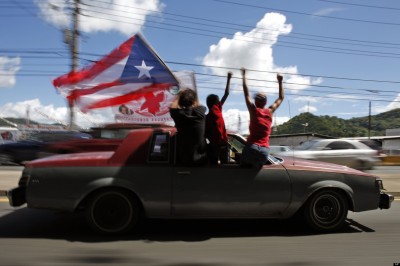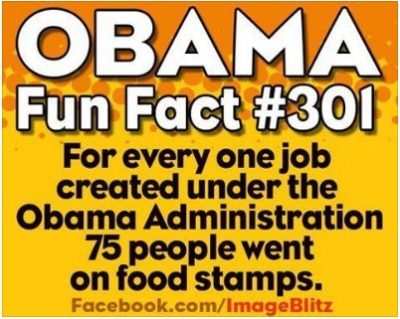
image credit huffingtonpost.com
(AP Photo/Ricardo Arduengo)
More than one-third of the population in Puerto Rico is now on food stamps. American taxpayers are now handing out more than $2 billion each year to residents of Puerto Rico – most of it in cash. Since the food stamps are forked over in cash form, it is impossible to know if the hard-earned taxpayer funds are actually even being used to provide food for the poor.
The US Department of Agriculture (USDA) recently admitted that the federal agency cannot verify how the Puerto Rico food stamps funds are being spent, but don’t appear to have a plan to correct the possible taxpayer abuse. Most of the American money is distributed through the Nutrition Assistant Program, also known as NAP. Another portion of the funding stems from the 2009 stimulus package.
The idea of federally mandated charity must end, and end soon, or the greatest nation in the world will be broke and we will be faced with a raging civil unrest scenario. In Puerto Rico, approximately 1.37 million residents were handed food stamps during 2012. The average unemployment rate in the Caribbean nation is 14.2 percent and the median annual household income is about $19,000.
Statistics for the food-based entitlement program in the United States boast a doom and gloom outlook as well. In 2012, approximately 48 million residents were handed food stamps every month. The number of Americans on food stamps represents about 15.2 percent of the overall population. Americans have a long history of setting records, but the new high of one-in-five households dependent upon the government (i.e. taxpayers) to put food on their dinner plates is cringe-worthy and not something worthy of a ribbon or medal.
In Puerto Rico, the food stamps program does not operate like the Supplemental Nutrition Assistance Program (SNAP) in the United States. Puerto Rican officials are permitted to distribute the taxpayer dollars in the form of block grants. Under the reported guidelines of the program, a total of 25 percent of the individual’s “benefit” can be turned over in cash form. The average monthly entitlement amount received by residents is roughly $240.
A USDA report issued in 2010 noted that it is “widely acknowledged” that Puerto Rican food stamps recipients spend their cash allotment on items other than food. For three years the government has been aware of the taxpayer abuse, but has not opted to end the program until the fraud is corrected.
An excerpt from the USDA food stamps report reads:
“Like SNAP, NAP distributes benefits on an EBT debit card. However, unlike SNAP, up to 25 percent of the monthly benefit may be redeemed for cash. When cash is withdrawn from an ATM, there is no way to verify that funds are spent on food; however, the 25 percent provided in cash is designated for food purchases. One of the main reasons that provisions of 25 percent of the benefits in cash was built into the program was to allow participants without access to certified retailers a way to purchase food.”
 Extending the food stamps program to Puerto Rice began in 1974. The federal government made the illogical decision to replace guidelines which at least attempted to include a verification process with a block grant system in 1982. Current food stamp eligibility requirements for Puerto Rico residents applying for the taxpayer funded program range from having a maximum income of $2,796 for a one person household to having a maximum income of $12,708 for a seven person home.
Extending the food stamps program to Puerto Rice began in 1974. The federal government made the illogical decision to replace guidelines which at least attempted to include a verification process with a block grant system in 1982. Current food stamp eligibility requirements for Puerto Rico residents applying for the taxpayer funded program range from having a maximum income of $2,796 for a one person household to having a maximum income of $12,708 for a seven person home.
The Puerto Rico Status Resolution Act was introduced in Congress last month. The bill was proposed by the island nation’s only non-voting congressman. The Puerto Rico statehood bill has 30 sponsors from both sides of the political aisle. Puerto Rican citizens have benefited from the country’s relationship with America for about a century, but the Puerto Rico Status Resolution Act is the first time legislation to make the nation the 51st state has been introduced in the US Congress.
If Puerto Rican voters opt for statehood, the bill requires President Barack Obama to draft legislation within 180 days to create the 51st state. Puerto Rican Resident Commissioner Pedro Pierluisi had this to say about the Puerto Rico Status Resolution Act:
“The government of the United States is a champion of democracy and self-determination, and it has to adhere to these principles with respect to its own citizens. Puerto Rico has been called the shiny star of the Caribbean, and it’s time that our state shines, together with the other states, on the flag of the United States of America.”
A “two question status plebiscite” conducted in November showed that 61 percent of Puerto Ricans wanted statehood and 33 percent wanted to become a free nation with an “association” with the United States of America. The remaining responders wanted outright independence. In March, the Obama administration added $2.5 million to the budget plan for a vote to be held in Puerto Rico.
Alejandro Garcia Padilla, the governor of Puerto Rico supports the commonwealth status the island currently holds but does want a final resolution to the status debate. Padilla also stated that he is most concerned with combating the struggling economy in Puerto Rico and battling the high crime rate. Just what America needs—another state with a struggling economy with lots of crime. A presidential task force on Puerto Rico determined in 2011 that the island was “hindered” economically and on a social development platform due to the lack of a resolution on the status question.
The commonwealth status Puerto Ricans currently enjoy means that they are non-voting US citizens who do not pay income taxes but are reportedly required to contribute to Social Security. As American citizens, they are eligible for all welfare entitlement programs.
The massive number of residents partaking of the taxpayer funded social programs has spurred the phrase “welfare island” in some political circles. On average, American taxpayers send $17 billion in welfare funds in Puerto Rico. In addition to food stamps, a multitude of island residents receive housing assistance, medical assistance, and college financial aid. Some estimates put the number of Puerto Rico residents receiving housing assistance as high as 70 percent.
How do you feel about taxpayer funded welfare in Puerto Rico?
 Off The Grid News Better Ideas For Off The Grid Living
Off The Grid News Better Ideas For Off The Grid Living

![Food-Shock[609X75]](http://www.offthegridnews.com/wp-content/uploads/2013/06/Food-Shock609X75.jpg)

